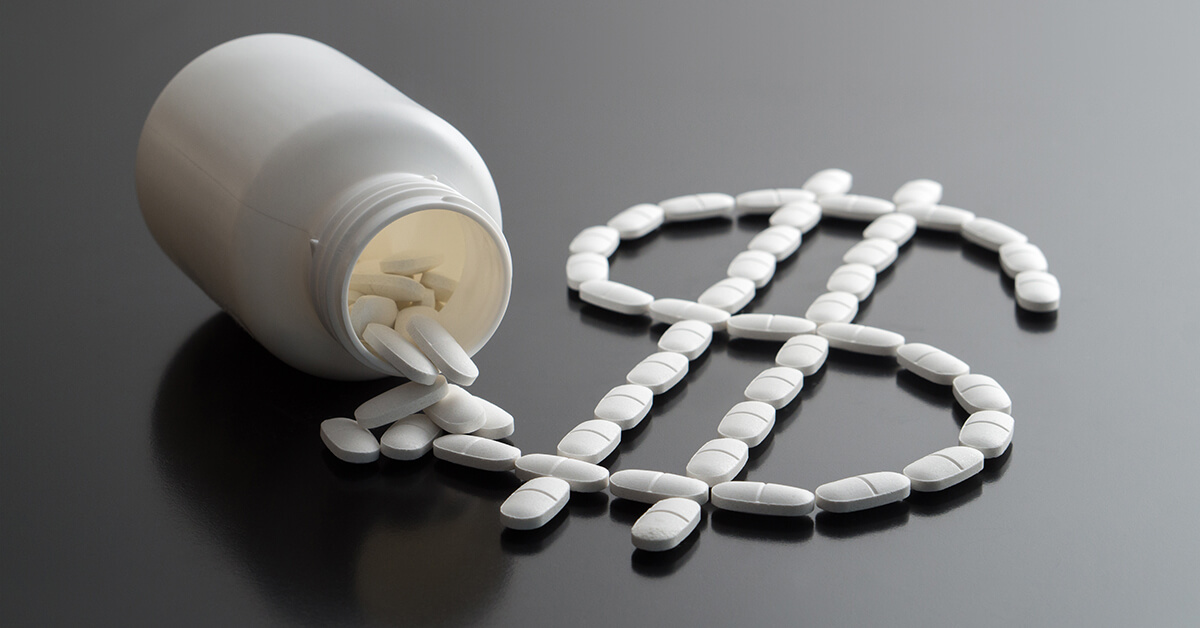May 5, 2022

Burda on Healthcare: 10 Things I Didn’t Know About Drugs and Drug Prices
I don’t know a lot about the pharmaceutical industry. Although I’ve been on the healthcare beat as a reporter, editor and writer for 39 years, it’s one of two subject areas I’ve hesitated to jump into with both feet. The other being Medicaid.
The way I feel about drugs and Medicaid is the same way I feel about fly fishing. I love to fish. But I don’t fly fish. I know just enough to realize that if I tie my first fly, I’d be hooked, and I could never go back. I’d have to buy all new fly-fishing gear and learn a completely new set of skills. Maybe when I retire.
Similarly, I know just enough about the pharmaceutical industry to realize that if I start writing about it regularly, I’d be hooked. I could never go back to writing about healthcare consumers, patient safety or value-based care.
Here are two things that I think I know about the pharmaceutical sector of our $4.5 trillion healthcare system. One, most people love prescription drugs. Two, most people hate prescription drug companies. People love their drugs because they keep them as healthy as possible if not alive. But people hate drug companies because they charge a lot for their drugs, which can make them hard to afford or impossible to get.
 I’m on five prescription drugs that keep me as healthy as possible if not alive. I love them for that. They are pricey, but I can afford them right now, fortunately. I don’t hate drug companies, at least not yet.
I’m on five prescription drugs that keep me as healthy as possible if not alive. I love them for that. They are pricey, but I can afford them right now, fortunately. I don’t hate drug companies, at least not yet.
So, while these five drugs are keeping me around, I decided to expand my knowledge base just a bit about the pharmaceutical industry. Here are 10 things I didn’t know, courtesy of two reliable sources: CMS’ latest national health expenditure data and IQVIA’s annual The Use of Medicines in the U.S. report.
You can download the CMS’ NHE projections here. And you can download the 64-page 2022 IQVIA report here.
Here are the 10 things that you may not know either:
- Drug spending is rising slower than health spending. CMS projects that national spending on prescription drugs will increase by 4.3% this year to $380.4 billion. That’s slightly lower than the 4.6% projected in increase this year for all national healthcare spending. That’s a lot lower than the projected in increase in hospital spending (6.9%), in physician and clinical services spending (6.2%) and home healthcare spending (6.1%).
- Drug spending is down as share of total health spending. Drug spending this year will represent 8.5% of total national health expenditures, according to CMS’ data. Five years ago, in 2017, the $315.9 billion in drug spending represented 9.2% of national health expenditures that year.
- Consumer out-of-pocket drug spend is up slightly. This year, CMS projects that consumers will pay $47 billion out of pocket for their prescription drugs. That’s up just 1% from the $46.5 billion they spent in 2021.
- Consumers’ share of total drug spending is down slightly. The $47 billion CMS says consumers will pay out of pocket for their prescription drugs this year represents about 12.4% of the total drug spend projected for 2022. That’s down slightly from 12.8% in 2021.
- Insurers continue to cover the bulk of total drug spending. This year, public and private health insurers will pay for 86.4% of all prescription drug spending, according to data compiled by CMS’ actuaries. That’s up slightly from 86% in 2021. Other third-party payers picked up the remaining 1.2% in both 2021 and 2022.
- The annual increase in the number of prescriptions is steady. The total number of prescriptions dispensed to consumers grew 2.4% in 2021 to about 6.5 billion, per the new IQVIA report. That’s up from a 1.7% increase in 2020 but in line with the 2.6% and 2.3% increases in 2018 and 2019, respectively.
- Hypertension meds are the biggest seller. In terms of medical conditions, the largest number of dispensed prescription drugs were for high blood pressure. In 2021, pharmacies filled more than 1.2 billion prescriptions for blood pressure medications, IQVIA said. A distant second and third were for mental health reasons (544 million) and to treat high cholesterol (508 million).
- But other conditions are attracting more prescriptions. In terms of biggest increases, dispensed prescriptions of corticosteroids led the pack with a 10.5% jump in 2021, followed by ADHD meds (7.2%), dermatologic meds (6.4%), anti-ulcer drugs (5.8%), mental health meds (5.5%) and drugs to treat GI problems (5.5%).
- Pain med scripts and usage continued to wane. Interestingly, the number of prescriptions filled for pain medications rose only 1.1% in 2021 to 395 million, according to IQVIA. Per capital opioid “morphine milligram equivalents” dropped for the 10th consecutive year to 309 after peaking in 20211 at nearly 800 MMEs per capita, IQVIA said.
- You can get change back from your $10. The average amount consumers paid out of pocket for a prescription was $9.41 last year, according to IQVIA’s numbers. That’s down from $10.14 five years earlier in 2016.
I can hear all the “yes, buts” now.
Seriously, though, what do these 10 factoids collectively say? Here’s what they say to me.
 Are drugs expensive? Yes. Are they getting more expensive? Yes, but their cost isn’t going up as fast as the cost of other types of medical care or treatments. Are consumers paying more out of their pockets for their meds? No, not really. Are consumers less able to afford their meds? On an actual dollar basis, probably not. But if the prices for the other things that they buy are going up faster, probably yes. The opioid abuse crisis is still a crisis. But we’re making progress. And if we lost weight, exercised more and ate better, we wouldn’t have to buy so many blood pressure pills and statins with our hard-earned money, which we could spend on other things.
Are drugs expensive? Yes. Are they getting more expensive? Yes, but their cost isn’t going up as fast as the cost of other types of medical care or treatments. Are consumers paying more out of their pockets for their meds? No, not really. Are consumers less able to afford their meds? On an actual dollar basis, probably not. But if the prices for the other things that they buy are going up faster, probably yes. The opioid abuse crisis is still a crisis. But we’re making progress. And if we lost weight, exercised more and ate better, we wouldn’t have to buy so many blood pressure pills and statins with our hard-earned money, which we could spend on other things.
Like fly-fishing equipment.
Thanks for reading.




